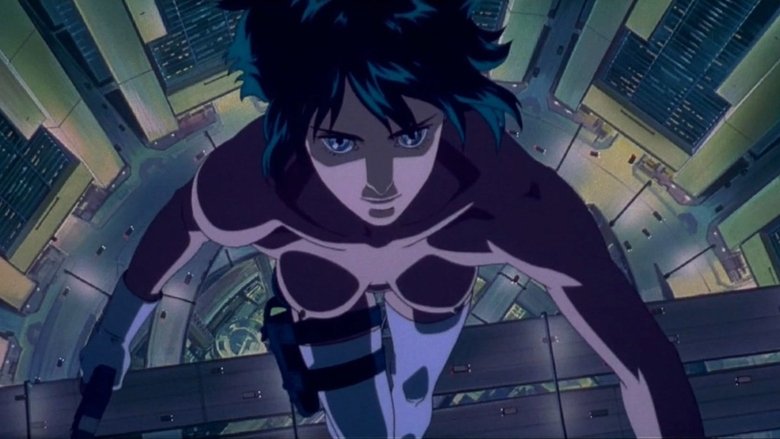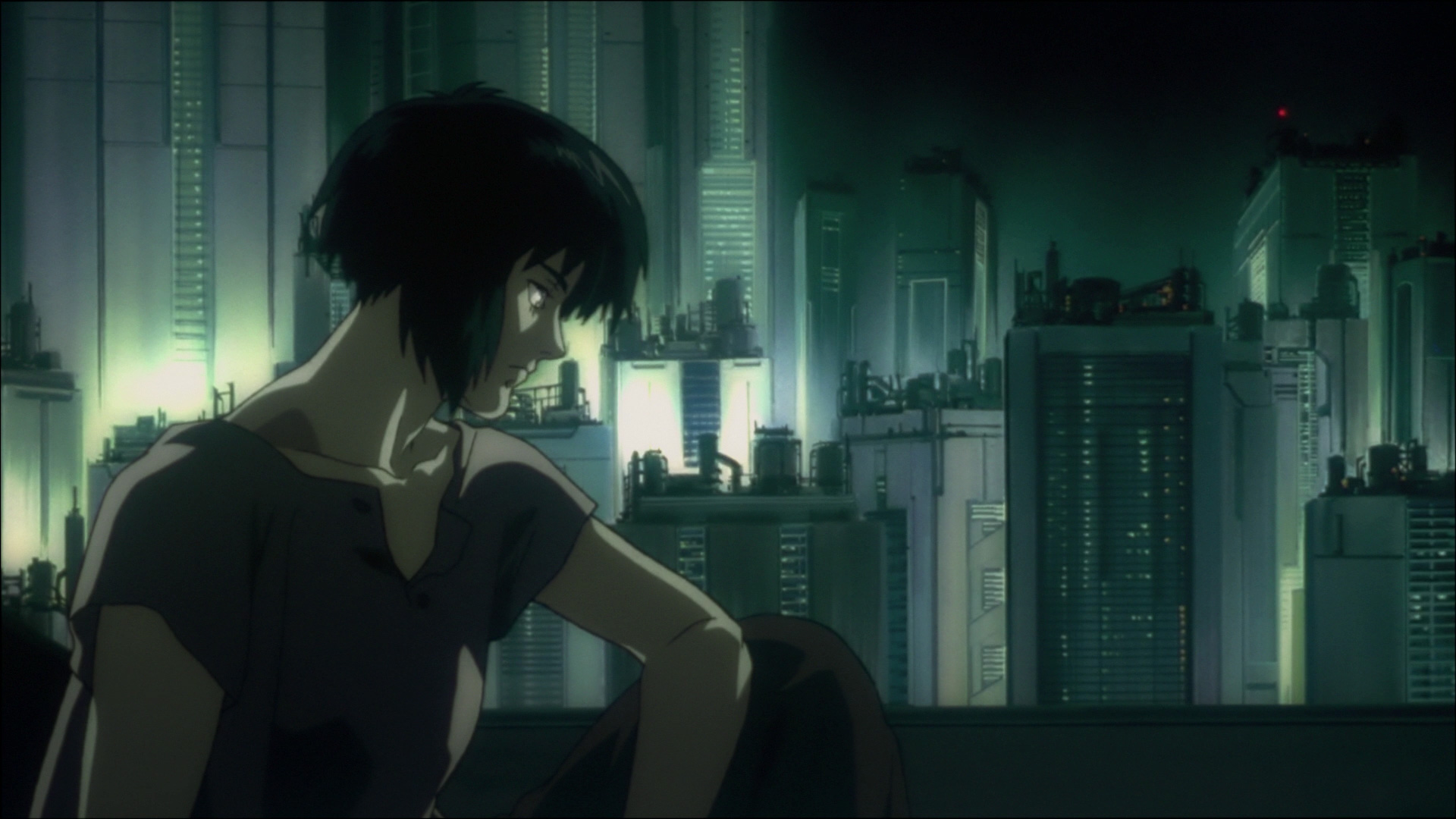← Back to Reviews

in
#452 - Ghost in the Shell
Mamoru Oshii, 1995

In a future where fully artifical humans exist, a counter-terrorist cell does battle with a mysterious hacker that is capable of manipulating human beings.
I really have to respect Ghost in the Shell for continuing to be just as complex and puzzling each time I watch it (I believe this particular viewing is at least the third in the space of a decade). It clocks in on the lighter side of 90 minutes, but it packs a lot into that time that admittedly makes it feel overly long. At least it does so in a way that at least feels challenging rather than irritating. It does work off a somewhat simple premise at first - the lines between human and machine are blurring further and further in the future, with plenty of humans having at least some mechanical modifications to their person. Some citizens are even full-blown artificial humans - the titular "ghost in the shell" refers to what could best be considered an artificial human's soul and whether or not such a thing truly exists. Questions about the perception of reality and the nature of humanity are what provide considerable weight to the film's main plot, which concerns the members of a counter-terrorist department known as Section 9 initially trying to foil some duplicitious diplomats before being drawn into a conflict with a mysterious hacker known simply as "the Puppet Master", who is good enough to actually hack into people's brains and control their minds.
For the most part, Ghost in the Shell earns its reputation as a classic within the field of animé. In addition to the incredibly detailed character models (which is emphasised during the credits sequence where protagonist Kusanagi is created), credit must go to the elaborate depictions of a futuristic Tokyo range from glossy penthouses to rainswept slums. There are plenty of scenes that take the time to show off the scenery and effects more so than advance the plot, so it's a testament to the artwork's quality that these moments don't feel boring. The plot does ultimately feel rather secondary to a lot of what's going on here, as characters are frequently given to conversations that elaborate upon the film's preoccupation with souls and whatnot. There are a few well-executed action sequences thrown in for good measure, but they are far enough apart to mean that this should not be remotely considered an action film. The problem with prioritising lengthy philosophical discussions over plot is that when the two eventually start to bleed together as the film progresses (most notably in the climax), it can end up being just mind-numbing after a while. That's the kind of thing that can prove especially alienating and may cause people to write off Ghost in the Shell as pretentious navel-gazing, but I like that coming back to this movie never truly feels boring no matter how slow and ponderous it may get. That same slow, ponderous nature may be what ultimately stops me from considering it a major classic, but otherwise it's a magnificient-looking piece of work with a solid core that is definitely an essential for anyone looking to see animation in general reach its full potential.
Mamoru Oshii, 1995

In a future where fully artifical humans exist, a counter-terrorist cell does battle with a mysterious hacker that is capable of manipulating human beings.
I really have to respect Ghost in the Shell for continuing to be just as complex and puzzling each time I watch it (I believe this particular viewing is at least the third in the space of a decade). It clocks in on the lighter side of 90 minutes, but it packs a lot into that time that admittedly makes it feel overly long. At least it does so in a way that at least feels challenging rather than irritating. It does work off a somewhat simple premise at first - the lines between human and machine are blurring further and further in the future, with plenty of humans having at least some mechanical modifications to their person. Some citizens are even full-blown artificial humans - the titular "ghost in the shell" refers to what could best be considered an artificial human's soul and whether or not such a thing truly exists. Questions about the perception of reality and the nature of humanity are what provide considerable weight to the film's main plot, which concerns the members of a counter-terrorist department known as Section 9 initially trying to foil some duplicitious diplomats before being drawn into a conflict with a mysterious hacker known simply as "the Puppet Master", who is good enough to actually hack into people's brains and control their minds.
For the most part, Ghost in the Shell earns its reputation as a classic within the field of animé. In addition to the incredibly detailed character models (which is emphasised during the credits sequence where protagonist Kusanagi is created), credit must go to the elaborate depictions of a futuristic Tokyo range from glossy penthouses to rainswept slums. There are plenty of scenes that take the time to show off the scenery and effects more so than advance the plot, so it's a testament to the artwork's quality that these moments don't feel boring. The plot does ultimately feel rather secondary to a lot of what's going on here, as characters are frequently given to conversations that elaborate upon the film's preoccupation with souls and whatnot. There are a few well-executed action sequences thrown in for good measure, but they are far enough apart to mean that this should not be remotely considered an action film. The problem with prioritising lengthy philosophical discussions over plot is that when the two eventually start to bleed together as the film progresses (most notably in the climax), it can end up being just mind-numbing after a while. That's the kind of thing that can prove especially alienating and may cause people to write off Ghost in the Shell as pretentious navel-gazing, but I like that coming back to this movie never truly feels boring no matter how slow and ponderous it may get. That same slow, ponderous nature may be what ultimately stops me from considering it a major classic, but otherwise it's a magnificient-looking piece of work with a solid core that is definitely an essential for anyone looking to see animation in general reach its full potential.
